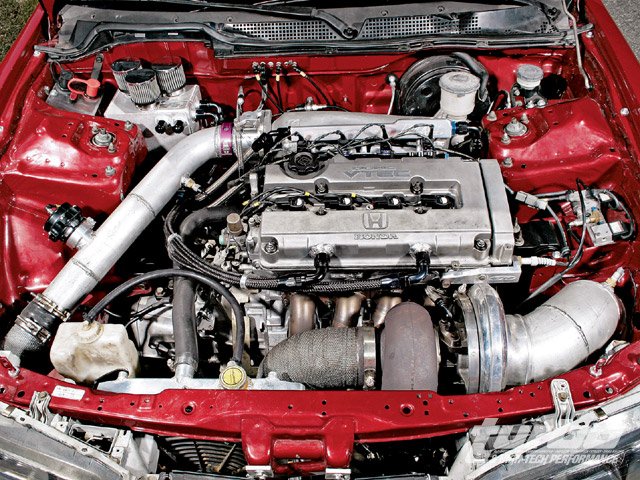Mobile Mechanic Engine Repair


Mechanics of an Engine
How a Four Cycle Engine Works
The intake stroke is when the air-fuel mixture flows into the combustion chamber. This mixture is controlled by sensors and settings for the carburetor or fuel injection system. The intake stroke as the piston moves from TDC (top dead center) to BDC (bottom dead center) and the intake valve(s) is/are open. The motion of the piston in the direction of BDC creates a low-pressure event in the cylinder that sucks the air/gasoline mixture through the intake track, past the intake valve(s) and into the cylinder. The cylinder continues to fill slightly beyond BDC because the air-gasoline mixture continues to flow by way of its inertia while the piston starts to switch direction. Controlled and directed by other sensors, timing gears, chains, and/or belts, the intake valve remains open a few degrees past the piston reaching BDC. Depending on engine design, the intake valve then closes and the air-gas mixture is sealed inside the cylinder.
Mobile mechanic engine repair is dependent on the overall knowledge of how internal combustion engines work. The four-stroke engine design is the most common and utilizes four varied piston strokes (intake, compression, power, and exhaust) to complete one working cycle. The piston makes a complete pass in the cylinder to complete one running cycle. An operating cycle entails two revolutions (720°) of the crankshaft.
Intake Stroke
Compression Stroke
The compression stroke occurs as the trapped air-gas mixture is compressed inside the cylinder. The combustion chamber is sealed to shape the charge. The charge is the volume of compressed air-gas aggregate trapped in the combustion chamber ready to ignite. Compressing the air-fuel aggregate produces more energy to be released when the charge is ignited. Intake and exhaust valves must be closed to make certain that the cylinder is sealed to produce maximum compression. Compression is the squeezing of a large volume to a smaller volume in the combustion chamber. The flywheel facilitates to hold the momentum important to compress the charge.
When the piston of an engine compresses the charge, the increase in compressive force being done by the piston causes heat to be generated. The compression and heating of the air-gas vapor in the charge causes an increase in charge temperature and an increase in fuel vaporization. The increase in charge temperature happens uniformly in the combustion chamber and produces quicker combustion (fuel oxidation) after ignition.
The increase in gas vaporization happens as small droplets of gasoline end up vaporized more completely from the increased pressurized temperature. The multiplied droplet surface area uncovered to the ignition flame allows extra complete burning of the fee within the combustion chamber. Only gas vapor ignites. An increase in droplet surface place permits fuel to launch more vapor rather than ultimate a liquid.
The more the charge air/fuel mixture is compressed, the more energy will be released from the ensuing explosion process. The energy needed to compress the charge is substantially less than the increase in energy that comes from the combustion. For example, in a regular small engine, the energy required to compress the mixture is only 25% of the amount of energy produced from the combustion.
The compression ratio of an engine is the difference in the volume of the cylinder between the piston at TDC and BDC. Gasoline engines commonly have a compression ratio starting from 6:1 - 10:1. The higher the compression ratio, the greater the fuel-efficiency of the engine. However, higher compression ratios require more energy to start the engine. Some small engines will use a pressure release device to make starting easy.
Ignition
The ignition (combustion) event takes place when the charge is ignited. Combustion is the rapid, oxidizing chemical response in which a fuel chemically combines with oxygen within the environment and releases strength in the form of heat. Proper combustion includes a short but finite time to spread the flame throughout the combustion chamber. The spark on the spark plug initiates combustion at about 20° of crankshaft rotation before TDC.
Power Stroke
The power stroke occurs when the piston is driven down from the ignition of the compressed air/fuel mixture in the cylinder. Piston force and subsequent movement are transferred through the connecting rod to apply torque to the crankshaft. The torque applied initiates crankshaft rotation. The amount of torque produced is decided through the stress on the piston, the dimensions of the piston, and the throw of the engine. During the power stroke, both valves are closed.
Exhaust Stroke
The exhaust stroke happens when spent gases are expelled from the combustion chamber and expelled out to the atmosphere. The exhaust stroke is the final stroke and occurs when the exhaust valve is open and the consumption valve is closed. Piston movement evacuates exhaust gases to the environment.
As the piston reaches BDC in the course of the power stroke, combustion is whole and the cylinder is full of exhaust gases. As the exhaust valves open, the piston, helped by the mass of the flywheel, pushes back to TDC, forcing the exhaust gases out through the open valves and out through the catalytic converter, muffler, and tailpipe. Once the piston reaches TDC, at the end of the exhaust stroke, one operating cycle has been completed. Mobile mechanic engine repair techs are adept at all engine and other repair services.